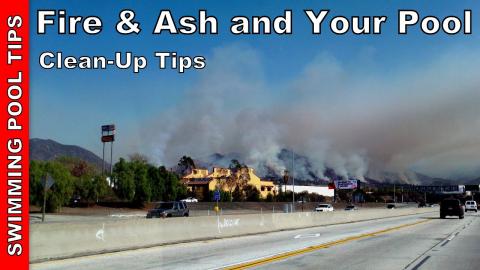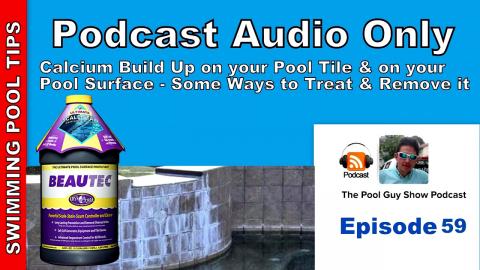Tips on Draining a Swimming Pool
Description
Draining your swimming pool sounds simple enough. But there are many things to be aware of, and some things you overlook could cost you thousands of dollars and could cause potential damage to your pool.
Plaster/cement and Pebble Tec pools are the only in-ground pool types you can safely drain. If you drain a drop-in fiberglass pool down, the walls may collapse and damage the pool. If you drain in an in-ground vinyl pool, the liner can separate from the wall, severely damaging the pool to the point where you will need a new liner. The drop-in Fiberglass Pool and an in-ground Vinyl Pool should only be drained by a company specializing in them. Otherwise, you can damage these types of pools by draining them down.
The first thing to check is how your city looks at pool draining. Most towns in every region ban draining your pool directly into the gutter outside the street. Here in my area, if you drain a green pool or a blue pool directly into the road in front of your house, you will get cited, and the fines can range from $5,000 to $10,000—a steep price to pay for not following the city rules.
The best place to drain a pool is directly into the sewer line. Locating the sewer line on the property can be the hard part. If the customer has never had his mainline snaked by a plumber, they may not know where it is even located. You are looking for a black pipe with a square cap that will fit an adjustable wrench. Usually, it is 3 inches or more in diameter. I found some right behind the kitchen sink in the house. Sometimes, they are next to a bathroom. I saw a few just on the side of the house. Mine is on my garage floor, covered with a metal cap. If it is set low enough, some may be surrounded by bushes or dirt.
If you need help locating the sewer line, one trick is to use the washing machine waste line. This also goes directly into the sewer. If the washing machine is in a downstairs room or the garage, remove the waste line and insert your pool hose, ensuring it is deep enough to stay in and not fall out. Now, you can drain the pool into the sewer line through the washing machine’s waste line.
You also want to avoid draining the pool directly into the yard around the pool. This may sound like a no-brainer, but letting the water run into the dirt around your pool area may seem convenient. The problem with this is that you put 15,000 or 20,000 gallons of water directly into the soil around your pool, raising the water table – meaning the ground is saturated. Once the pool is empty, the weight of the water is no longer holding the pool down. If the water under the pool is very wet, the pool may lift and pop out. This is called pool pop-out, which is rare, but draining the water into the soil around the pool could cause this.
Speaking of pools popping out, it is infrequent. The ground will need to be saturated with water, which can only happen if you drain the pool into the soil or if you have some severe rain, 4-6 inches in a short time. The pool shell is heavy with all of the gunite and rebar, so it is not a shared experience. A pool builder in Florida constructed over 2,000 pools, and only two pools ever popped out. Both pools were empty after the gunite, and there was hurricane-type rainfall. You should not be concerned about the pool popping out in most areas.
One concern when the pool is empty is the ambient temperature. If you drain a pool in 95-100-degree weather and leave it empty for more than 24 hours, there is a chance the Sun can damage the exposed plaster surface. After refilling, you may notice cracking and chipping of the plaster. This is due to Sun exposure, and if the plaster is older or in poor shape, you risk damaging it by draining the pool on a scorching day. You also want to avoid draining a pool that has chips and cracks in it to begin with. This will lead to more chipping and cracking.
Visit my Website: http://www.swimmingpoollearning.com/
eBook: https://www.swimmingpoollearning.com/swimming-pool-care-ebook
YouTube Video Index: http://poolmandave.blogspot.com/2014/03/swimming-pool-tips-reviews-how-to-video.html – A list of all of my videos.
Blogger: http://poolmandave.blogspot.com/
Facebook: https://www.facebook.com/swimmingpoollearning/
https://poolguycoaching.com/Twitter: https://twitter.com/Mrdgvb1
Join me on Patreon: https://www.patreon.com/poolguycoaching
Podcast Website: https://www.thepoolguypodcastshow.com/
Coaching Site: https://poolguycoaching.com/
Shop at Leslie's: Leslie’s Pool Supplies has been a do-it-yourselfer and pool trade professionals' trusted partner since 1963, providing quality products and services to make pool care easy and solutions and expertise to do it right. http://lesliespool.com/?utm_medium=referral&utm_source=spll&utm_campaign=spll
If you are not using pool service software Try Skimmer free for 30 days at https://www.getskimmer.com/poolguy
Skimmer, Everything you need to run your pool service business, all in one app













